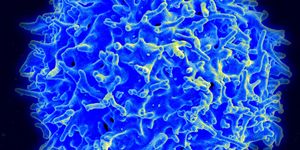Native Bolivian biologist, Erika Cuéllar, has developed a team of indigenous parabiologists who are leading conservation in the dry forest, Gran Chaco, that spans Paraguay, Bolivia, Argentina and Brazil. After the Amazon, Gran Chaco is the second largest biome in the world, covering one million square kilometers. It is home to one of the healthiest populations of jaguars in South America, thirteen species of armadillos, a previously-thought extinct species of peccary, over 3,400 species of plants (400 of which are endemic), more than 500 species of birds, and 150 species of mammals. Perhaps you have never heard of this diverse biome, but it deserves attention because it is under threat.

All across its expanse, unmanaged land settlement and large scale infrastructure development are stimulating regional-scale shifts in human populations. The relentless advance of mechanised agriculture is the greatest threat to the fragile Chaco across Paraguay, Bolivia and Argentina. Only one remaining expanse still remains relatively undisturbed – Bolivia’s 34,000km2 Kaa-Iya National Park and, alongside it, 19,000km2 of adjacent Isoseño Guaraní native land. Kaa-Iya is the largest protected tropical dry forest in the world and is also the first national park in South America to be proposed by an indigenous group. The Isoseño have successfully administered the park for over a decade. Their land, together with the park, represents the best conservation opportunity for the region’s wildlife.
Enter Erika Cuéllar, a native of the region, who has worked alongside the Isoseño for the past ten years. Cuéllar's vision is to turn young people from the Chaco's three main indigenous groups – the Guaraní, Ayoreo and Chiquitano – into what she calls parabiologists. A parabiologist is akin to a paramedic, who can save lives but does not have the years of training of a medical doctor, she explained.
"These people are a part of the natural environment; they belong to this land. If they are not involved, I don't see how we can achieve the long-term conservation of the biodiversity of this area," she said, as she led a dozen trainees from Bolivia, Paraguay and Argentina on a dawn survey of animal tracks.
So far, several dozen people in Bolivia, Paraguay, and Argentina have gone through the 800-hour, nine-month parabiologist course, which incorporates practical and theoretical training in biology, mapping, data collection, and other skill sets. Cuéllar says the hours are more intensive than those of a master's degree program, and there are final exams.
“Like paramedics, parabiologists use their specialized skills to save lives—in this case, their ecosystem, the land that belongs to them,’’ says Cuéllar, a National Geographic Emerging Explorer and Rolex Laureate. “Parabiology is also a way to invest in the involvement of local people, to give the rightful owners of the land a way to make informed decisions about the territory and its future in a changing world."

Sources:
Whitley Award,
National Geographic,
The Guardian,
BBC










